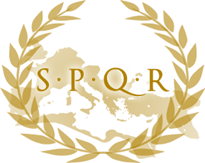By Dr Charles Margerison
Psychologist
Teachers can help students learn via virtual as well as personal socio- emotional learning through team discussions. This article provides examples and some guidance on how this can be done using our resources.
Students can feel part of historic occasions via five minute videos that enable them to discuss and even re-enact events. In doing so, they learn through socio emotional engagement.
The Context – The Romans invaded Britain in AD 43 and ruled for over 400 years. To help students explore this, we created a 5 minute video highlighting the key issues. This is shown at the start of the 45/50 minute class.


Timetable
Teacher’s introduction – 5 minutes.
Video – 5 minutes – Sample Scene 1 – The Roman Invasion
Discussion – 15 minutes – Students join discussion groups with 4 or 5 students per group.
Half of the groups are assigned the roles of being ‘Romans.’ The other half are allocated the roles of ‘Britons.’
The questions for the groups are as follows:-
Group Reports to Whole Class -10 minutes. Each group summarises their key points. A ‘Roman’ group can commence, followed by one of the ‘British’ groups. It is to be expected the other groups will cheer or jeer, showing their emotional involvement.
Teacher Review – 5 minutes – Key points to be noted, and any project work allocated, such as writing up what it was like to be a Roman or a Briton.
The Context – British colonists arrived in North America in 1607. Others followed and established 13 colonies. These were governed under the laws of England until 1707, when the Act of Union created the United Kingdom. The colonists remained loyal to the British monarch until King George III and his Government imposed Stamp Duty Taxes. In 1765, a group called ‘The Sons of Liberty’ opposed those taxes, and acts of rebellion started to occur. A significant revolt took place in Boston, Massachusetts in 1773 which has become known colloquially as “The Boston Tea Party.’
The interactive lesson starts with a music video, based on a 5 minute video that helps students to understand the views of revolutionaries, known as ‘Patriots.’ They were opposed by colonists, called ‘Loyalists.’ They were supporters of King George’s Government, which made the laws in London.
The student group discussions support socio emotional as well as factual learning. Each group is given the opportunity to identify through role playing. Students join either the ‘Colonists’ or the ‘Patriots’ groups, with reference to what is called ‘The Boston Tea Party.’
Timetable
Teacher’s introduction – 5 minutes.
Video – 5 minutes – Sample Scene 2 – Boston Tea Party
Discussion – 15 minutes – Students join discussion groups with 4 or 5 students per group. Half of the groups are assigned the roles of being ‘Colonists.’ The other half are allocated the roles of ‘Patriots.’
The questions for the groups are as follows:-
Group Reports to Whole Class -10 minutes. Each group summarises their key points. A ‘Colonist’ group can commence, followed by one of the ‘Patriot’ groups. It is to be expected the other groups will cheer or jeer, showing their emotional involvement.
Teacher Review – 5 minutes – Key points to be noted, and any project work allocated, such as writing up what it was like to be a Colonist or a Patriot.
The combination of short videos, to give the students the basic information, followed by engaging group conversation raises the energy level for learning via group discussion.
It enables tutors to facilitate virtual learning of content, via the 5 minute videos, and to support student socio emotional learning through group discussion.
In particular, when students take on the roles of Romans and Britons, or Patriots and Colonists, it helps them to learn through involvement and not just by reading and memorising.
The psychology of learning is therefore based on various levels of engagement. By using the videos as the start point for group/team debate, tutors can facilitate virtual and interpersonal understanding.

The above cases indicate applications that can be relevant to both the History and Social Studies aspects of different curricula. For example, it is likely The Roman Invasion of Britain will be a high priority in UK schools and The Boston Tea Party will be a priority in the USA curriculum.
We have found the approaches outlined above can help teachers and students to focus on Character Education. The discussion on the issues arising in historical events highlights points about values and priorities. Also, it raises issues about courage and conviction, which relate to modern day events.
The applications therefore help students to focus on both their personal development as well as just understanding the historic events. In particular, students develop the skills of oracy, and psychological perspective, as they debate the pros and cons of the issues involved.
The success of this approach has encouraged us to develop a series of virtual/group based interpersonal learning resources. These will cover important topics like Magna Carta, Slavery Reform and Civil Wars.
We welcome feedback and case study applications from those who use the 5 mintute videos as the start point to virtual and interactive learning.


Dr Charles Margerison, President and founder of Amazing People Worldwide, is a Psychologist. He is also President of Amazing People Schools. Dr Margerison has consulted widely for major organizations in the fields of organizational and educational psychology. He was previously Professor of Management at Cranfield University, UK, and the University of Queensland, Australia. He founded Amazing People Worldwide in 2006 and is supported by a dedicated global team. He previously co-founded Emerald Publications, and Team Management Systems and has authored more than 30 books. Dr Charles is also the creator of ‘Can Do Kids Worldwide, a virtual music group that helps students to learn about countries and cultures through music. He has also developed Imagineland, for early learners. You can follow him on Linked in .
For more information, please email info@amazingpeopleworldwide.com
Websites:






Copyright © 2021. Amazing People Worldwide.
All Rights Reserved.
This site is protected by reCAPTCHA and the Google
Privacy Policy and Terms of Service apply.



